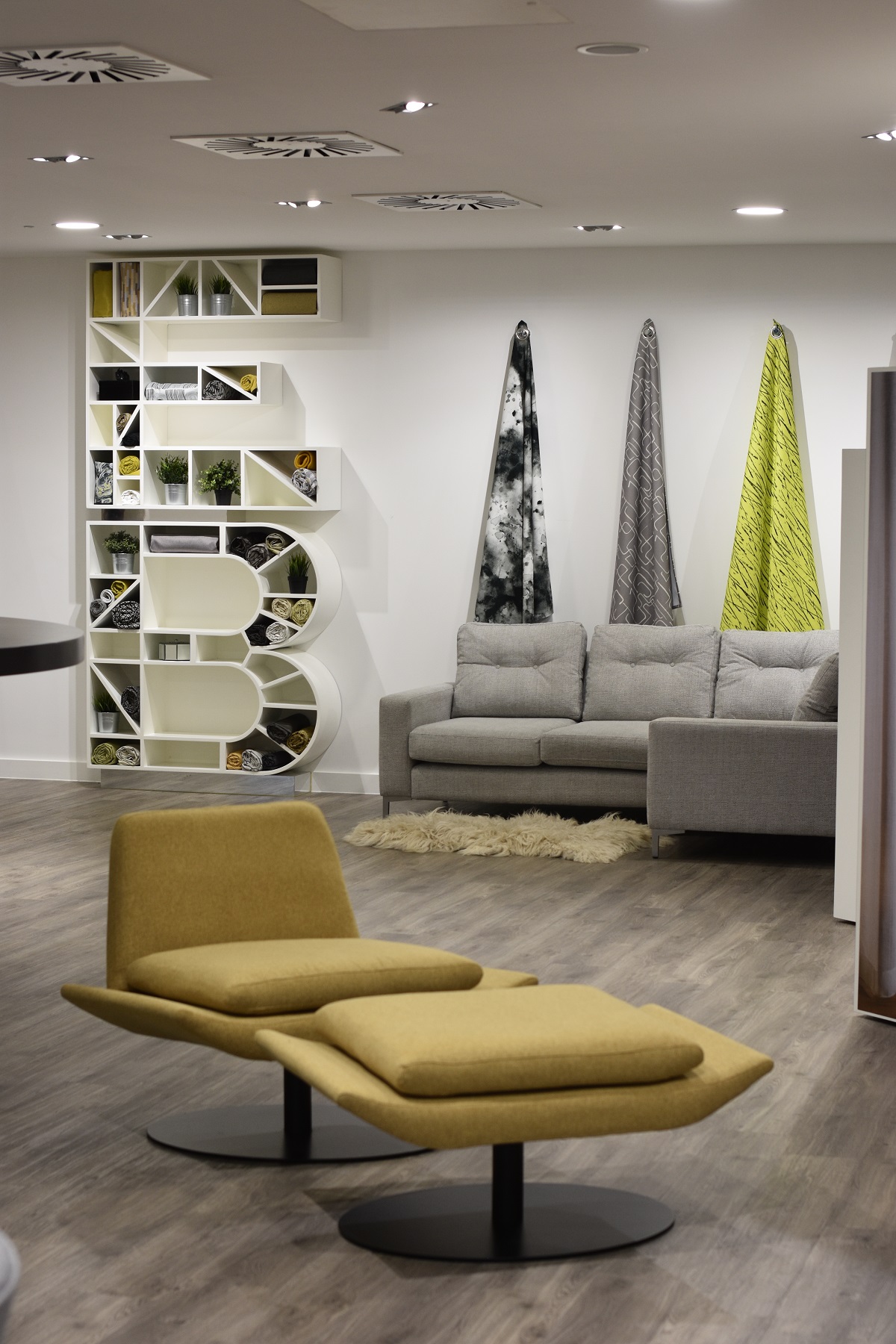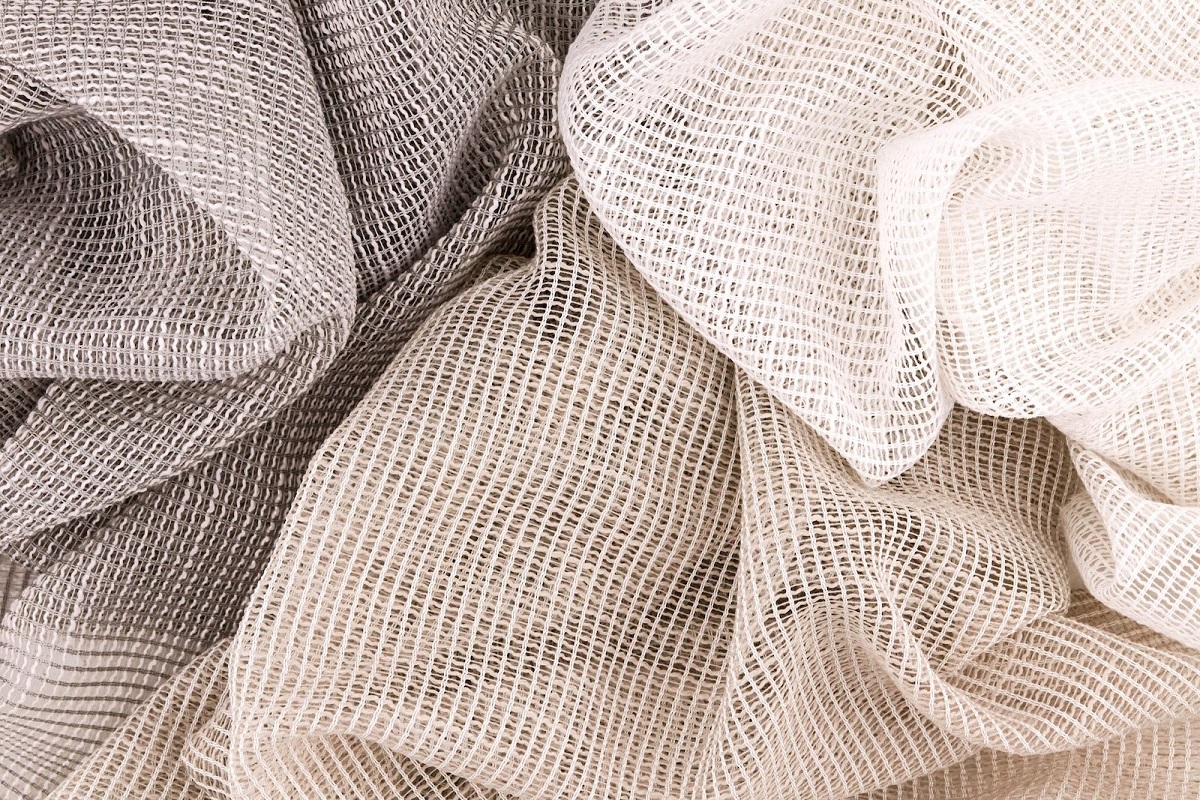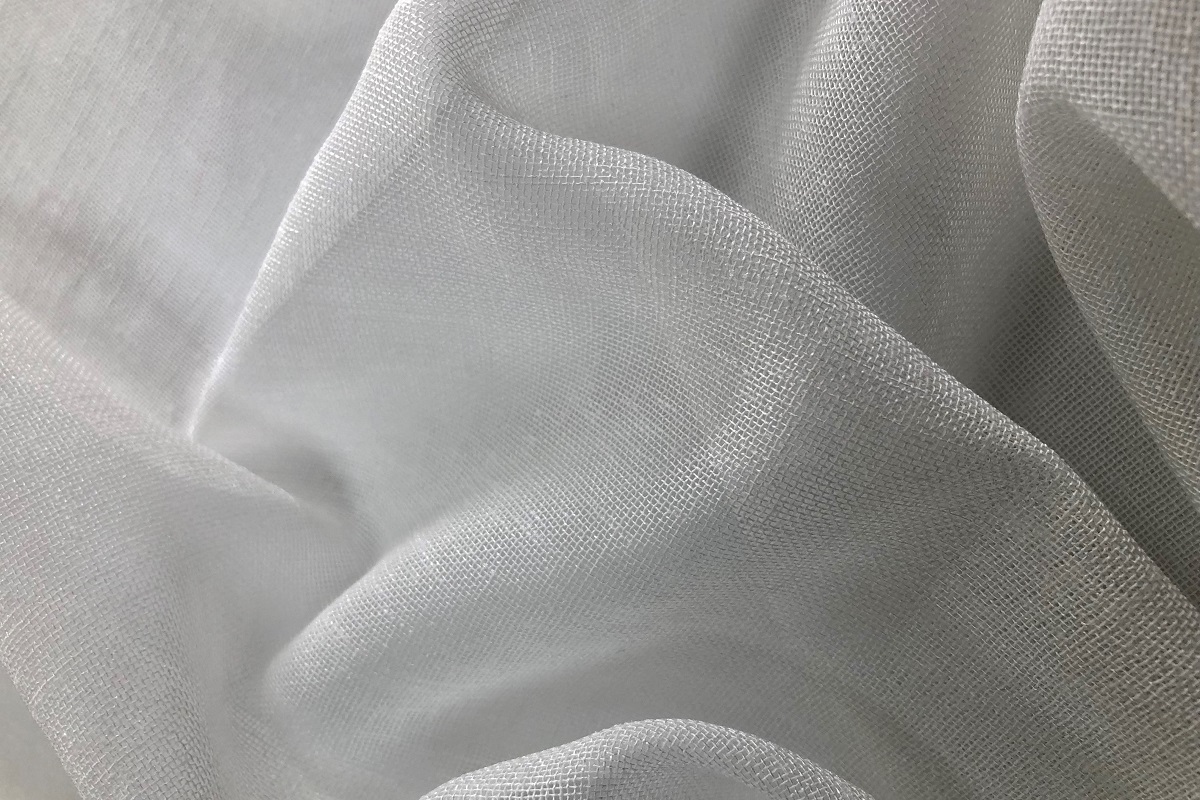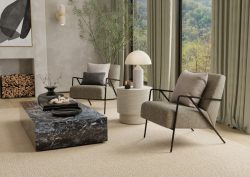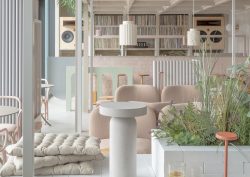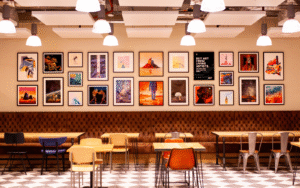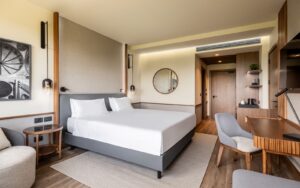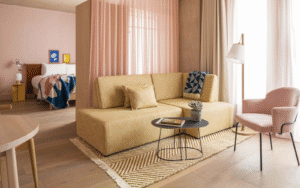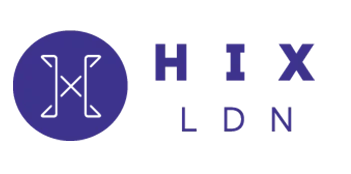Exploring the intricacies of the Edmund Bell printed, flocked, blackouts and sheers over multiple floors was a journey that took in the layers and level of attention required to equip a bolt of woven fabric with the qualities demanded by the hospitality industry and as writer Pauline Brettell discovered, there is a lot more to those bolts of blackout than meets the eye…
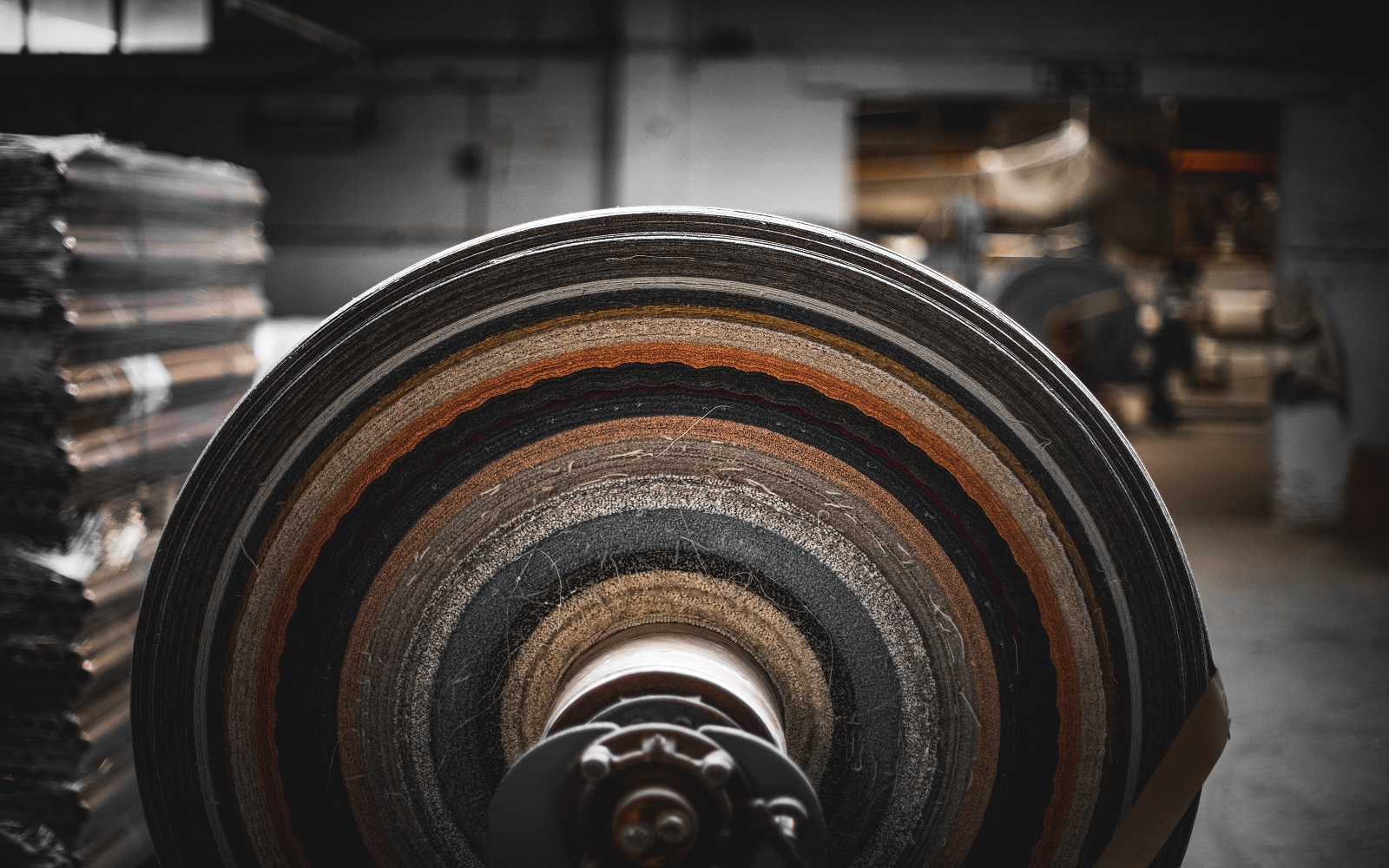
Edmund Bell has a long history in the textile trade, having started in apparel linings with curtain linings soon becoming the mainstay of the business. The most decisive move toward the interiors textiles range, interestingly, came during the Blitz, in response to the need for a simple blackout – a much less technical item than what is produced today – and social shifts continue to impact the process as the brand responds to both consumer, client and changing market demands.
From evolving fire standards, concerns about hygiene and the demands of the contract industry, suppliers like Edmund Bell have to continually shift and stretch to provide attractive fabrics that, importantly, do the job. Moving on from the Blitz, sustainability and the drive to protect the planet are the more contemporary concerns having a fundamental impact on and driving change. Walking through the factory, it is clear that contract fabrics have to be all things to all people, fulfil fire standards, remain as durable as customers have come to expect, while also including recycled content and finally be recyclable.
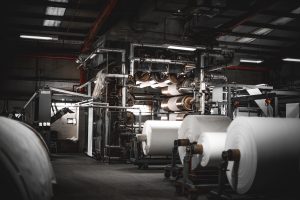
Image credit: Edmund Bell
Taking in the technical terms of slub and crossweave, weft and warp as we wound our way up and down the production line, the level of both detail and process that transforms bolt upon bolt of unprocessed fabric into a fully functional blackout or thermal contract quality fabric is remarkable. What is equally remarkable is how an industry like this, essentially dependant on chemicals and potions, processes and production is rising to the challenge of sustainability – something which on the surface of things is not necessarily a natural fit.
In conversation with the designers behind the scenes at the factory, another challenge being faced comes from an interesting intersection of economics and aesthetics. A move towards a more minimalistic approach to textiles in many interiors settings is being driven by cost-cutting as well as design considerations and this in turn, has meant that many performance features need to be combined within the same product. For example, thermal, light control and acoustic properties are all important factors in the experience of a hotel guestroom and nowadays a single Edmund Bell fabric article is required to address all of these needs at once.
What was key in the conversation throughout the day, from machinists to engineers to designers, is the enthusiasm for testing the limits of the process and then coming up with solutions – solutions that allow both the planet and the price point to co-exist. While hospitality brands and designers are increasingly asking more questions about provenance, price remains key and sustainability still frequently takes a back seat to cost by the end of the procurement cycle. Rising to the challenge, the entire team at Edmund Bell are striving to make changes and develop new ranges to achieve what customers are looking for, in terms of both sustainability and price point.

Image credit: Edmund Bell
Continuing the sustainability conversation as we went deeper into the factory, this is not a new subject in the company, which started looking in earnest into recycled yarns in 2017/18 when it became clear this was a concern on the customer radar. The parameters of this conversation are however constantly changing as the story takes on an increasingly circular solution, with recyclable being as important as recycled. As provenance comes through the supply chain it needs to include water recyclability and reduction, green energy, as well as recycled yarn. There is no doubt that Edmund Bell is devoting time, energy and innovation to questions of sustainability, but as a business still needing to turn a profit, the challenge to complete the loop on recycled content remains a balancing act.
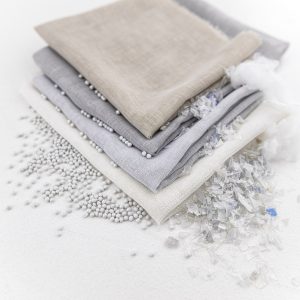
Image credit: Edmund Bell
The champions of the recycled fabric ranges that have become a core part of the company ethos are LINK and SWAY collections. Both these sheer weaves are made using recycled Repreve yarns, which are in turn made from recycled plastic bottles and so truly fulfil a sustainable message. These fabrics also meet all the strict testing protocols required for contract fabrics, maintaining that balance between practicality and the planet again.
Additional pieces to the sustainable puzzle, are the questions of durability and performance – including recycled content is unhelpful if the resulting fabric doesn’t last as long as it should and doesn’t achieve what you need it to in terms of usage. In all of the new developments, Edmund Bell is working to offer transparent sustainable initiatives like post-consumer recycled content whilst still ticking all of the practical concerns clients have come to expect.
While functionality may be the driving force in the company, there remains plenty of room and inspiration for design and aesthetics in the Edmund Bell studio. Catching up with the bespoke design process was as intriguing as the production floor, where a tiger and a monkey where being painstakingly removed from an established design at the request of a client – flora without the fauna – a bespoke service provided by the studio allowing designers to change details and colourways. The design possibilities are, quite literally, endless! Continuing to maintain the balance between design and function, the online design-hub is an additional company feature that provides clients with both design inspiration and practical specifications.
What was both exciting and interesting as we were guided through the factory and design studio, was that the changes being made towards both sustainability and creativity are wide ranging – from upholding new requirements for recycled and chemical content with upstream suppliers, to managing production processes and waste, to developing downstream recycling options for clients, right through to taking part in carbon offsetting initiatives. The changes with the biggest impact on both these strands are undoubtedly infrastructure developments to the finishing facility, where efficiencies are constantly being developed, machines updated and even power sources entirely switched out. Considering the many millions of metres of textiles finished and processed here every year, this is no mean feat.
Edmund Bell is one of our Recommended Suppliers and regularly features in our Supplier News section of the website. If you are interested in becoming one of our Recommended Suppliers, please email Katy Phillips.
Main image credit: Edmund Bell






